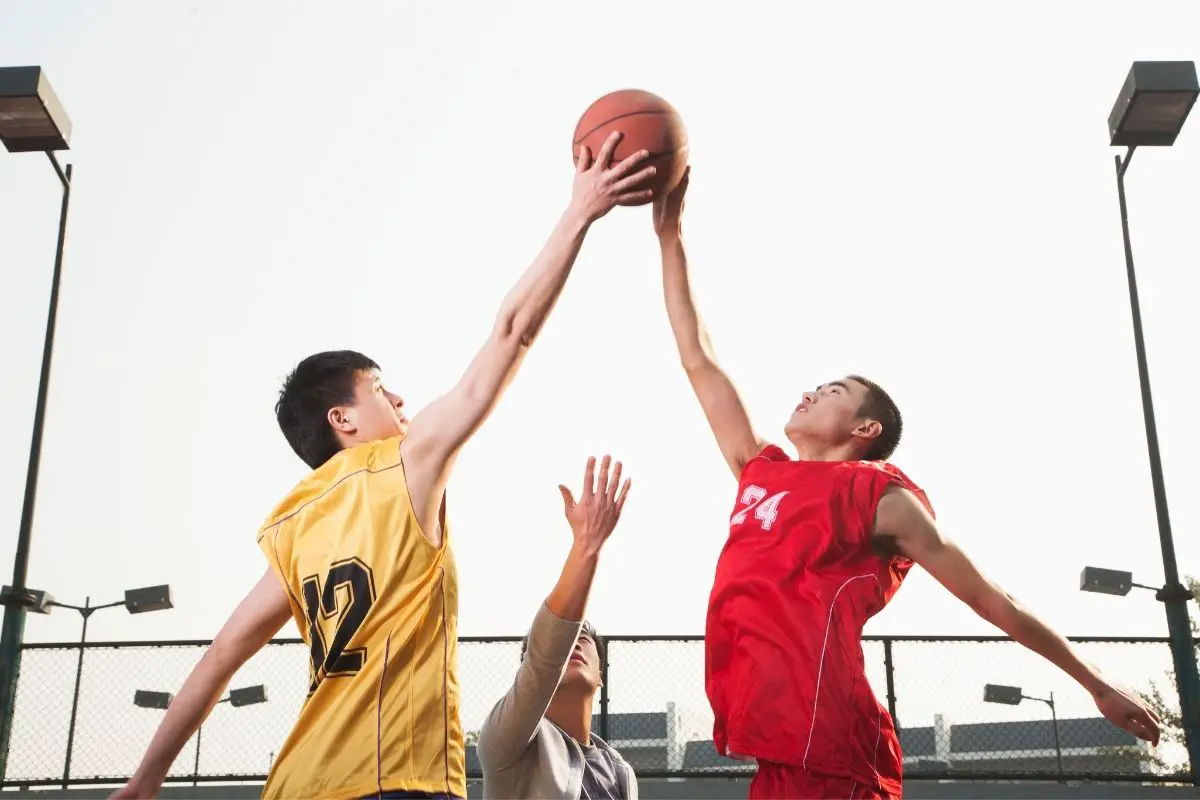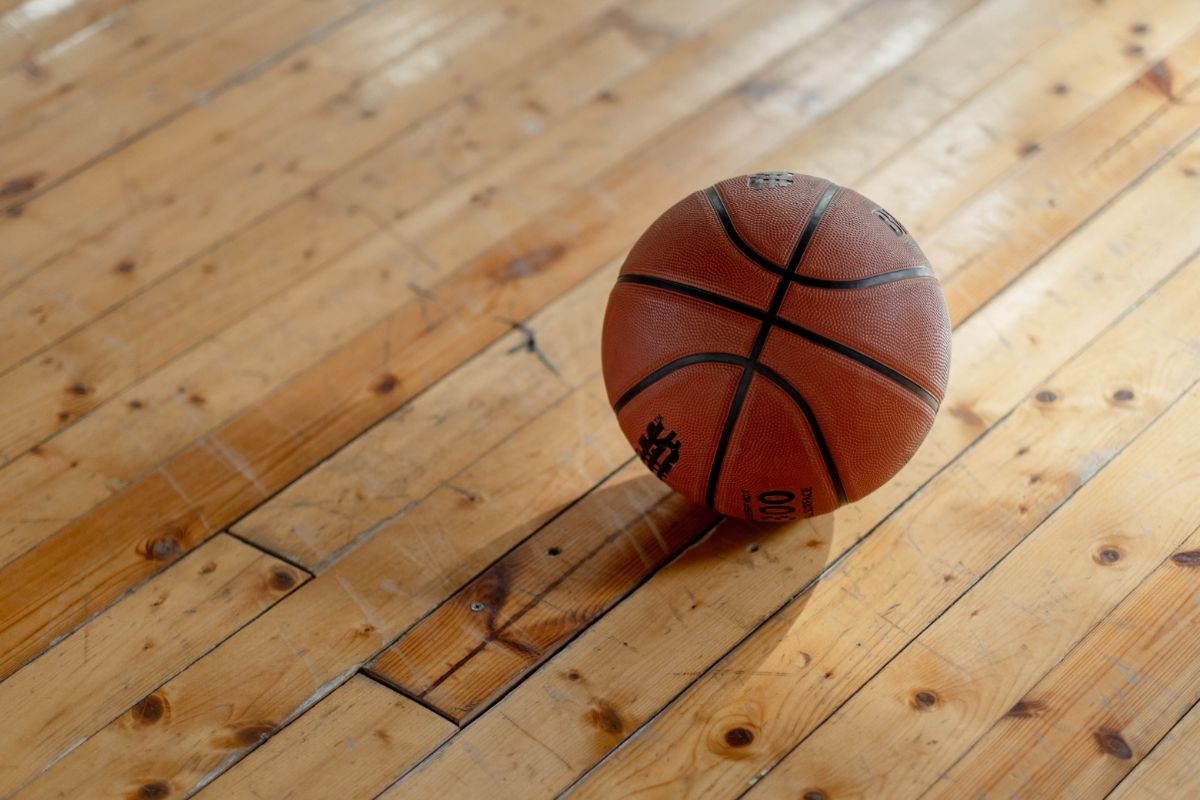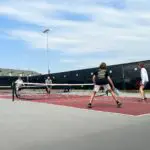While basketball is known to be a non-contact sport there is a lot of what is considered to be legal contact that can be seen on the court between players.
This can be confusing to spectators or anyone who does not understand the types of fouls that can be called by officials in a game of basketball.


Understanding what touches are legal and illegal can make it easier to understand the contact that occurs in a basketball game. Here we look at the different types of fouls in basketball.
Fouls In Basketball
Most fouls that occur in a game of basketball are committed by the defense players. Offense players can also cause fouls but this is not as common.
Referees and officials work together to call faults and fouls that count as illegal contact are ruled as personal fouls.
If officials cannot decide on a call then the referee has the final say. More difficult calls can often receive backlash as both sides will never be happy with the referee’s final call as often it results in one team being penalized.
Games that are referred to as close means that the referee is calling fouls that are a result of some physical contact between players. Games that are referred to as loose are when the referee says they are willing to allow some physical contact.
Players and coaches pay close attention to how a referee and officials are calling fouls in a game and adapt their playing style and game plan accordingly to avoid fouls.
Here we look at other fouls that can be a result of illegal contact with a player from the opposing team.
Typical Defensive Fouls
Below are the four most commonly called defensive fouls that you will often hear a referee or other game official call during basketball games at any level.
Blocking
When a player uses their body, especially their limbs, to prevent another player from moving on the court this is called a blocking foul.
This type of foul is common when a defensive player is attempting to draw a charge and they have not set their feet, or purposefully initiates contact with another player.
A foul will instantly be called if a player is seen to purposefully touch or move the hand of an offensive player. The referee’s signal for blocking is to blow their whistle while holding their hands on their hips.
There are legal forms of blocking also, this is when a player tries to intercept a ball pass but from a distance so that they do not come in physical contact with the player from the opposing team.
Hand Check
Hand check fouls are called when a player prevents, impedes, or slows the movement of a player from the opposing team using solely their hands.
Hand check fouls are common as defensive players can often resort to this when they attempt to cover a player who has the ball on the perimeter of the court.
Holding
This type of foul is quite similar to a hand check foul. A holding foul is when a player holds or grabs another player and this prevents the player from moving forward on the court. Holding can be called when either a player’s uniform or one of their limbs, or any body part, is held.
Illegal Hand Use
Illegal hand use commonly happens in heated games, such as championships or league finals. This type of foul is called when a player attempts to steal a ball in an illegal manner or they physically touch or hit the arm of a player who has the ball.
This foul can also be called if players begin to push each other around the court, including players who do not have the ball.


The referee can call this foul for any movements of a player’s hands that they think is illegal and so it is a controversial call often within games.
Typical Offensive Fouls
Next, we look at the three most common offensive fouls that you will often hear a referee or other game official call during basketball games at any level.
Charging
If a player has a position and a player with the ball runs into that player this would be an example of a charging foul.
If the defensive player is moving or does not have a position then the referee could potentially call a blocking foul on the defender rather than a charging foul on the other player.
The signal referees use to call a charging foul is one arm by their side and the other arm lifted to a salute position. Referees will complete this signal after blowing their whistle or as they blow their whistle.
Moving Screen
If the player that is setting the screen or the pick is moving a moving screen foul would be called.
When a player sets the screen they must follow the game’s rules and stay in position. Even a little movement such as a slide is enough to have the referee or other official call a moving screen foul.
Over The Back
This foul is typically called when a player is rebounding. Players cannot jump up over the back of positioned players in an attempt to reach and get the ball.
While this foul is typically an offensive foul, defensive players can too get called on this foul.
Final Thoughts
Penalties awarded for all of the above fouls differ and while there are set instructions as to what penalty should be awarded for certain fouls, there are different levels of fouls and so referees will issue penalties as they see fit in a game.
Typically, shooting fouls result in a free throw and non-shooting fouls mean that a team would lose possession of the ball.
We hope that with your new knowledge about when contact between players is allowed in basketball, and when it is not that you will be able to understand why in some games it may seem like players are touching each other a lot.
- Can You Play Pickleball on Grass? Tips and Tricks - June 12, 2023
- Do Pickleballs Wear Out? Everything You Need to Know - June 12, 2023
- Can You Play Pickleball on Concrete? A Guide to Playing on Hard Surfaces - June 12, 2023








